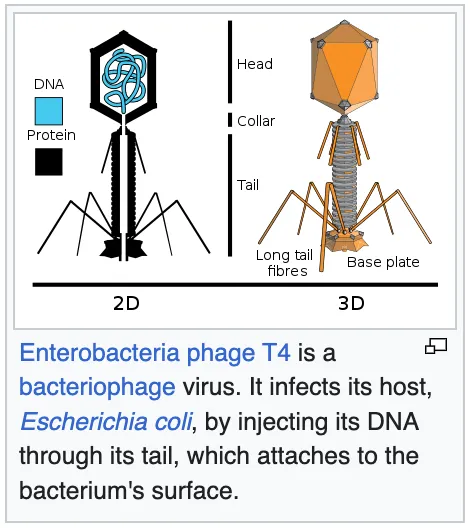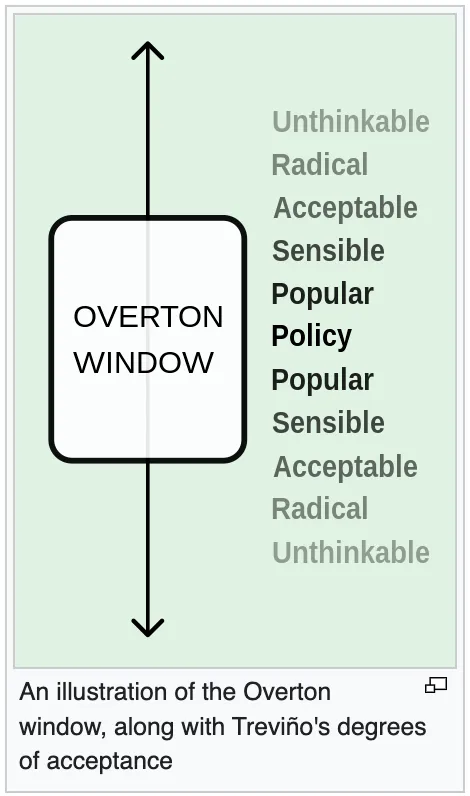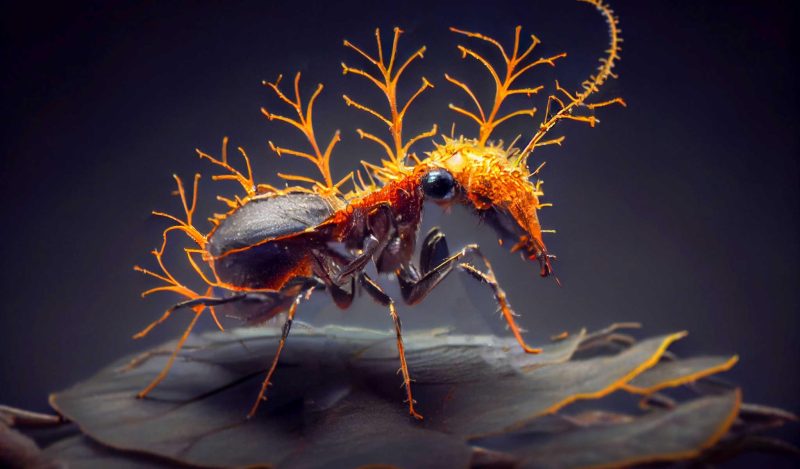I am a biologist, if nothing else. One of the many blessings of being a biologist is the wide range of metaphors for human group behavior which flow from this field. And of these, pondering the various adaptive strategies which species interacting with other species employ can be particularly productive.
I like to use metaphors as an insight engine. A sort of mental bridge from one field of knowledge to another. Reasoning by analogy, insights and knowledge from one discipline can often be used to break open new ways of thinking about another.
If you think of humanity as like a virtual ecosystem, then the ways that social groups (or tribes?) interact with each other can be considered similar to the way species interact in a physical ecosystem. This is one door that can be used to pass into the thought space of sociobiology. E. O. Wilson, a central figure in the history of sociobiology, defined the field as “the extension of population biology and evolutionary theory to social organization.”
Which logic leads me to pondering parasites, the various forms of parasitic interactions, parasitic behaviors, and their relevance to a few of the topics which consume much of my thought these days; the Administrative State, the World Economic Forum (WEF), those whose interests the WEF represents, and the culture and technology of Transhumanism which the WEF seeks to shape as a future for the rest of us.
Not to say that corporate media doesn’t also display parasitic behaviors. Let’s park that one for now, and come back in a later essay. Or maybe it is just self-evident and needs no further discussion.
I find it hard to wrap my head around the big picture of what is really going on with the failure of many Western governments to effectively serve their citizens, the “Global Reset,” the “Fourth Industrial Revolution,” globally harmonized transsexual and transhumanism advocacy, and the “climate agenda” at a macro level. So I reach out to things that I do understand relatively well, hoping that they can provide insight into these big systemic “global” movements that I find harder to understand.
So, here we go.
For purposes of this thought experiment, consider that since World War II, the American Imperial State has essentially become an apex predator. It certainly acts like one, walking around the earth like Tyrannosaurus Rex, flashing big teeth and consuming whatever high-energy animal food it can catch. Apex predators tend towards extinction (as species) due to various general outcomes of their interactions with the ecosystems within which they exist.
One way that predators become extinct is that they can become so successful, so highly adapted, that they outstrip their resource base – they run out of prey (food). As prey become more scarce, or is able to adapt to the pressure of its predators <think asymmetric warfare strategies including gorilla insurgencies and 5th gen. warfare ….>, highly specialized apex predators require larger and larger territories, and will eventually exhaust the environmental resources and conditions which they have become so well-adapted to exploit. <Expansionist imperialism, for example, and the limits of petroleum – based energy illustrate this paradox>. The evolutionary question to be solved here is whether the apex predator can maintain itself as a species <or organization, or empire> by adapting to the reality of these changing conditions <safe nuclear power, for example> or will it be so constrained by the evolutionary <or organizational> choices previously made which enabled it to become an apex predator. Decisions which constrain its ability to adapt to the changing conditions.
Evolution is a funny thing – it can result in highly adapted species existing on a sort of evolutionary island of their own making, where the changes (mutations) required to get to a more adaptive solution (distant island) impose a price that cannot be paid without damaging the reproductive fitness of the species so severely that it will never be able to get to that better island (with more food or essential resources).
In the case of nation-states, the price to be paid is often political. When politics becomes corrupted or ossified <like in our current gerontocracy>, the ability of a nation-state to adapt to changing conditions, to evolve, becomes very limited. It is often observed in DC that political (or bureaucratic) change cannot happen until certain people retire or die. Which is an argument for why more strict implementation of a fixed retirement age makes sense. Think of it like a form of term limit for bureaucrats. Another way to nourish the tree of liberty. The career of Dr. Anthony Fauci provides a nice case study to illustrate this point.
Gerontocracy: Form of oligarchical rule where leaders are older than most of the population
A gerontocracy is a form of oligarchical rule in which an entity is ruled by leaders who are significantly older than most of the adult population. In many political structures, power within the ruling class accumulates with age, making the oldest individuals the holders of the most power. Wikipedia

New Poll Revealing Biden’s Approval Rating Leaves CNN Host Stunned: ‘Lowest for Any American President’
The same can happen to social groups or “tribes.” Their “reproductive fitness” can be compromised by becoming too dogmatic, too specialized. I refer to “tribes” in the sense of tribal behaviors, with current examples including the wearing of paper dust masks to prevent viral transmission, dying hair purple or blue, displaying the colors of the Ukraine national flag by non-Ukrainians, and verbal virtue signaling <which pronouns do you use?> which are currently frequently used to display group allegiance to others. Those others that belong to your group, as well as to those who are outside, the non-believers.
The terms subculture or mass formation group are less biased ways of expressing the same idea. <Or counter-mass formation group in the case of those who argue that there is no virus, and that “terrain theory” can completely explain infectious disease.> The term “cult” is another word along this spectrum which is even more judgmental, more loaded with bias.
There are competitive (evolutionarily adaptive) advantages in being a generalist, in not being too highly invested in one ecological niche, or one group, tribe or cult. In a sociopolitical sense, generalists are often centrists.
Generalists do not accrue the benefits of becoming apex predators, but are in a much stronger position to adapt to changing conditions- to be able to transport to and survive on the next evolutionary island. In terms of global politics, you might think of the Swiss republic as an example of a generalist political system which has proven (over a very long time) to be able to adapt rapidly to changing political conditions by not seeking to become an apex predator, not seeking to dominate others and unilaterally extract their resources (eat others) to support their own growth and reproduction. Sometimes less (specialized) is more (adaptive) over the long run.
Personally, my sense is that the US Government has become overly specialized in the various forms of warfare. In contrast to US President Theodore Roosevelt’s foreign policy position of “Speak softly, and carry a big stick, you will go far,” current USG policies have downplayed the “speak softly” part (diplomacy) and become overly reliant on an wielding an over-developed stick. I suspect that T Rex was not known for diplomacy. Why bother with subtle negotiation and laborious crafting of win-win outcomes when you can just march in and gobble up whatever you want to eat?
Another way that apex predators become extinct is environmental change, either from external forces or in some cases due to consequences of their own success <we could use a different political term, and call that problem blowback>.
And then there are parasites.
Viruses do exist (just to drop a shovel of cement down that particular rabbit hole), and a case can be made that they are the ultimate (apex?) parasites. Bacteria have viruses, called bacteriophage. Animals, insects, plants, and pretty much all living things are preyed upon by one or more viruses. Some make the case that the prototypical viruses arose in plants, which then adapted to insects that eat plants, which then adapted to other animals that eat insects, and on ad infinitum. Viruses are really sort of like genome parasites. And they are ubiquitous. Which is not to say that terrain theory does not have its merits. But that is yet another rabbit hole.

Fun fact: When you think of Tyrannosaurus Rex, what comes to mind? Big teeth embedded in a big jawbone within a big head (my answer, maybe yours also). The fossil record indicates that T Rex developed a little problem with a freeloader (a Trichomonas-like parasite). This particular parasite appears to have caused the terrible lizard to develop holes in its jaw. That would certainly appear to be a problem if you were a big eater that needs a strong jaw! Gives new meaning to the term “Jawbreaker.”
Bureaucracies often develop parasitic characteristics, and I have become convinced that the United States’ Administrative State bureaucracy has become parasitic on its host, the federal government (and the general citizenry of the United States). And not in a good way. More like the Trichomonas-like parasite eating away at T Rex’ jaw.
I am also convinced that the World Economic Forum has become parasitic on the global economy. In both cases, these groups are not providing good value to citizens, and have become self-sustaining subcultures whose primary function seems to be self-preservation and advancement of their own interests and agendas at the expense of the overall “fitness” of the general population.
Now just to be clear, not all host-parasite interactions are bad. There are a wide range of bacteria which live in your gut (even more so that of a cow, for example) that are absolutely essential for you to live and thrive. This is an example of one form of parasitism, commensalism. A case is often made that the little internal engines which power each of our cells, technically called mitochondria, are actually examples of a highly evolved (and ancient) commensal host-parasite relationship, with the mitochondria being a sort of bacterium which has become an evolved and adapted intracellular parasite.
You can think of commensalism as win-win. Commensalism typically develops over a very long period of coexistence between parasite and host, in which what might have originally been a more predatory interaction gradually evolved into something that benefits both host and parasite. But the relationship between the modern Administrative State and the Federal Government is relatively new, and is far from a benign commensal relationship. Likewise the WEF and its globalist UN/WHO/WTO allies.
Lets play a game. Allow me a moment to stretch open your Overton window using well-documented parasitic strategies as metaphors for the actions and behaviors of the Administrative State and the WEF. Stretching is good, like yoga for your mind.

I will summarize the parasitic strategy, and you ponder whether you can think of any related examples of that type of parasitism in the modern US Administrative state or the WEF.
Parasitic strategies in biology (thanks Wikipedia!)
There are six major parasitic strategies, namely parasitic castration; directly transmitted parasitism; trophically-transmitted parasitism; vector-transmitted parasitism; parasitoidism; and micropredation. These apply to parasites whose hosts are plants as well as animals.[15][21] These strategies represent adaptive peaks; intermediate strategies are possible, but organisms in many different groups have consistently converged on these six, which are evolutionarily stable.
Parasitic castrators
Parasitic castrators partly or completely destroy their host’s ability to reproduce, diverting the energy that would have gone into reproduction into host and parasite growth, sometimes causing gigantism in the host. The host’s other systems remain intact, allowing it to survive and to sustain the parasite. Parasitic crustaceans such as those in the specialized barnacle genus Sacculina specifically cause damage to the gonads of their many species of host crabs. In the case of Sacculina, the testes of over two-thirds of their crab hosts degenerate sufficiently for these male crabs to develop female secondary sex characteristics such as broader abdomens, smaller claws and egg-grasping appendages.
Directly transmitted
Directly transmitted parasites, not requiring a vector to reach their hosts, include such parasites of terrestrial vertebrates as lice and mites; marine parasites such as copepods and cyamid amphipods; monogeneans; and many species of nematodes, fungi, protozoans, bacteria, and viruses. Whether endoparasites or ectoparasites, each has a single host-species. Within that species, most individuals are free or almost free of parasites, while a minority carry a large number of parasites; this is known as an aggregated distribution.
Trophically transmitted
Trophically-transmitted parasites are transmitted by being eaten by a host. They include trematodes (all except schistosomes), cestodes, acanthocephalans, pentastomids, many roundworms, and many protozoa such as Toxoplasma. They have complex life cycles involving hosts of two or more species. In their juvenile stages they infect and often encyst in the intermediate host. When the intermediate-host animal is eaten by a predator, the definitive host, the parasite survives the digestion process and matures into an adult; some live as intestinal parasites. Many trophically transmitted parasites modify the behaviour of their intermediate hosts, increasing their chances of being eaten by a predator. As with directly transmitted parasites, the distribution of trophically transmitted parasites among host individuals is aggregated. Coinfection by multiple parasites is common. Autoinfection, where (by exception) the whole of the parasite’s life cycle takes place in a single primary host, can sometimes occur in helminths <worms> such as Strongyloides stercoralis.
Vector-transmitted
Vector-transmitted parasites rely on a third party, an intermediate host, where the parasite does not reproduce sexually, to carry them from one definitive host to another. These parasites are microorganisms, namely protozoa, bacteria, or viruses, often intracellular pathogens (disease-causers). Their vectors are mostly hematophagic arthropods such as fleas, lice, ticks, and mosquitoes. For example, the deer tick Ixodes scapularis acts as a vector for diseases including Lyme disease, babesiosis, and anaplasmosis. Protozoan endoparasites, such as the malarial parasites in the genus Plasmodium and sleeping-sickness parasites in the genus Trypanosoma, have infective stages in the host’s blood which are transported to new hosts by biting insects.
Parasitoids
Parasitoids are insects which sooner or later kill their hosts, placing their relationship close to predation. Most parasitoids are parasitoid wasps or other hymenopterans; others include dipterans such as phorid flies.
Idiobiont parasitoids sting their often large prey on capture, either killing them outright or paralysing them immediately. The immobilised prey is then carried to a nest, sometimes alongside other prey if it is not large enough to support a parasitoid throughout its development. An egg is laid on top of the prey and the nest is then sealed. The parasitoid develops rapidly through its larval and pupal stages, feeding on the provisions left for it.
Koinobiont parasitoids, which include flies as well as wasps, lay their eggs inside young hosts, usually larvae. These are allowed to go on growing, so the host and parasitoid develop together for an extended period, ending when the parasitoids emerge as adults, leaving the prey dead, eaten from inside. Some koinobionts regulate their host’s development, for example preventing it from pupating or making it moult whenever the parasitoid is ready to moult. They may do this by producing hormones that mimic the host’s moulting hormones (ecdysteroids), or by regulating the host’s endocrine system.
Micropredators
A micropredator attacks more than one host, reducing each host’s fitness by at least a small amount, and is only in contact with any one host intermittently. This behavior makes micropredators suitable as vectors, as they can pass smaller parasites from one host to another. Most micropredators are hematophagic, feeding on blood. They include annelids such as leeches, crustaceans such as branchiurans and gnathiid isopods, various dipterans such as mosquitoes and tsetse flies, other arthropods such as fleas and ticks, vertebrates such as lampreys, and mammals such as vampire bats.
Do these parasitic strategies describe US Administrative state (deep state) or the WEF? If not, why not?
As I stated at the beginning of this essay, using strategies found in nature to find analogies for complex political and cultural organizational strategies has merit. It opens up new ways of thinking about human society and social structures. So, can we use biology to predict how these organizations will react on the world stage in the future?
Let’s discuss.
Reprinted from the author’s Substack
Published under a Creative Commons Attribution 4.0 International License
For reprints, please set the canonical link back to the original Brownstone Institute Article and Author.









